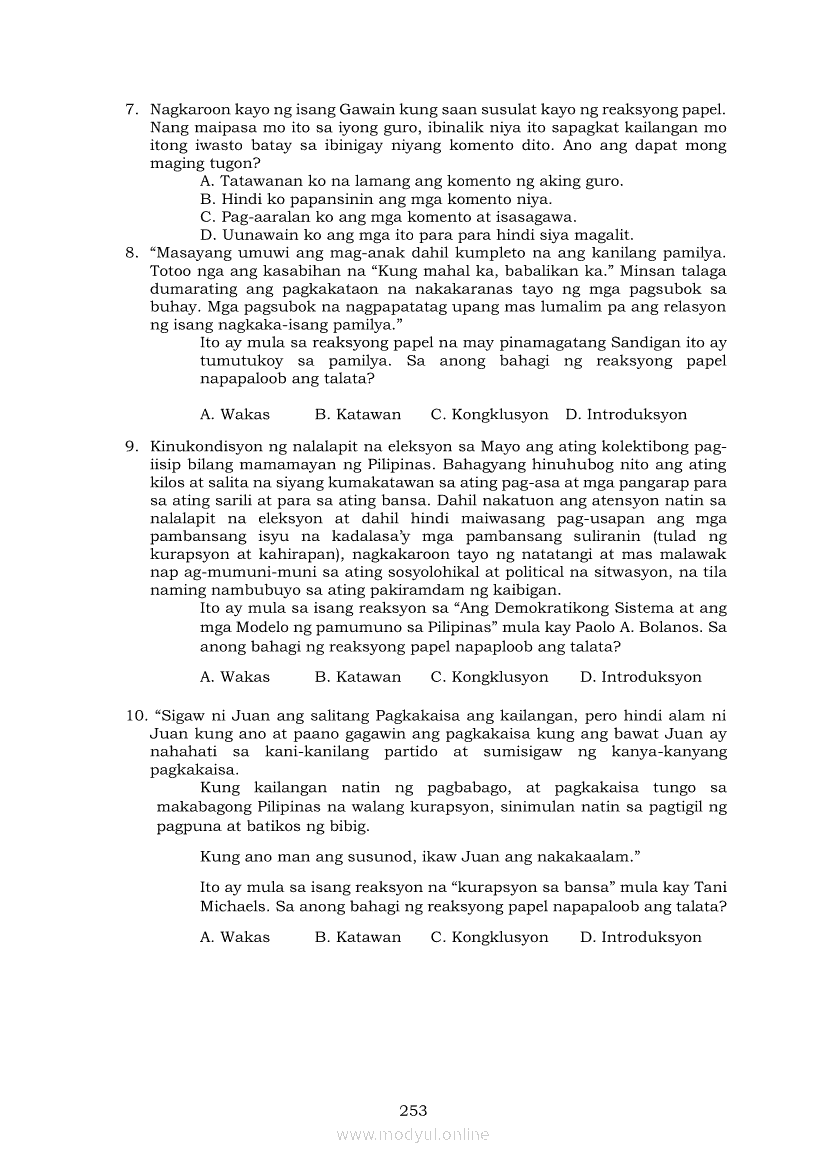
Sustaining learners in- terest in the lesson 9. Motivating the students to asks questions relevant to the lessons 8. Encouraging the active participation of the stu- dents in the learning tasks with some levels of inde- pendence 7. Providing opportunity for learners to demon- strate their learning 6. Aligning the students in teaching learning and reinforce- ment to the lesson 5. Using non-tradition- 4.6541 Very Evident al authentic assessment techniques 4.2066 Very Evident Uniqueness 4. Using appropriate for- 4.5321 Very Evident mative, summative tests congruent to the lesson 4.0001 Very Evident 4.9123 Very Evident 3. Providing a timely, ap- 4.2239 Very Evident propriate reinforcement/ 4.0901 Very Evident feedback to the learners 4.8431 Very Evident behavior 4.0459 Very Evident 4.1211 Very Evident 2. I DREAM Research Journal 2017 The Uniqueness in teaching… 1. Creating situations that 4.6901 Very Evident encourages learners to use higher order thinking skills. Presenting a lesson in a 4.3215 Very Evident logical and developmental manner, and 8. Utilizing technology re- 4.2311 Very Evident sources in planning, de- signing and delivery of the lesson.

Establishing routines and procedures to maxi- mize the use of time and instructional materials 6. Engaging and sustain- 4.1174 Very Evident ing learners interest in the 3.8741 Very Evident subject matter by making content 5.

Aligning the lesson ob- 4.1439 Very Evident jectives, teaching meth- ods, learning activities, and instructional materials Goals 4. Integrating language, lit- 4.3674 Very Evident eracy and values in teach- ing. Encouraging learners in 4.1023 Very Evident using higher thinking skills in asking questions. Status of School in terms of Goals and Unique- ness in Teaching Content Project GUIDE The goals is… ẋ Interpretation Content 1. Based on the self-designed questionnaire, these are the factors which may have bearing on the performance to uplift NAT results and student performance. Project GUIDE Factors The Project GUIDE factors in this study include goals, uniqueness in teaching, and integration of learn- ing materials for better development of educators. As shown in figure 4, majority of the respondents attended different trainings: school- based training with a total 30 respondents (35%), division- based trainings with 27 respondents who attended (33%), regional- based training with 25 respondents (29%), national training with a total number of 2 (2%), and only 1 (1%) respondent ex- perienced attending international training. 4 Frequency and Percentage Distribution of Re- spondents according to number of trainings attended. As reflected in figure2, the teacher-respondents have different length of years in service: 11 (37%) respon- dents with 2-5 years, 7 respondents (23%) with 11-15 years, 6-5 respondents (17%) with 6-10 years, 4 respon- dents (13%) with 16 years above, and 0-3 respondents (10%) with 1 year. 3 Frequency and Percentage Distribution of Re- spondents according to length of service. I DREAM Research Journal 2017 Length of service Fig. 2 Frequency and Percentage Distribution of Re- spondents by Age As shown in the Figure 2, most of the teacher re- spondents were from 31-40 years old with a total number of 12 respondents (40%), followed by 41-40 years old with a total number of 7 (23%), 23-30 years old with a total number of 6 respondents (20%), and 51-and above years old with 5 respondents (17%). These factors which may have bearing on the Assessment of Project GUIDE in Improving NAT and Grade of Grade Students are as follows: Age Fig.

I DREAM Research Journal 2017 Results and Discussion Teacher-related factors The teacher-related factors in this study include age, length of service, and number of trainings attended. Multiple regression analysis for identifying the predic- tors and testing the validity of the hypothesis. The descriptive statistics for the computation of mean, frequency, percentage and standard deviation. Statistical Treatment of Data To answer the problem posed in this study, the fol- lowing statistical tools were used in analyzing the data col- lected. The results were tabulated for appropriate statistical treatment. I DREAM Research Journal 2017 questionnaire was administered to the four (4) selected grade 10 sections, and teachers in Araling Panlipunan De- partment in Imus National High School through the help and cooperation of teachers, Department Head, and Prin- cipal.


 0 kommentar(er)
0 kommentar(er)
